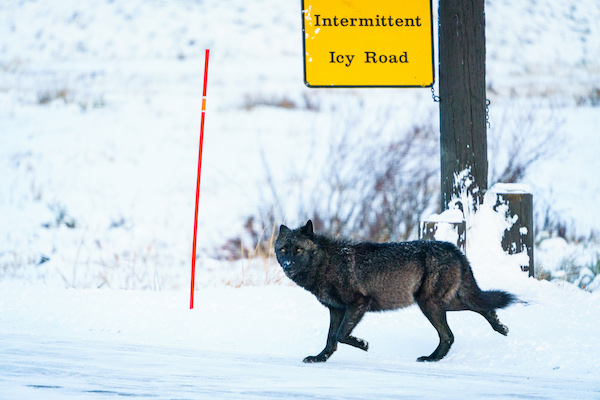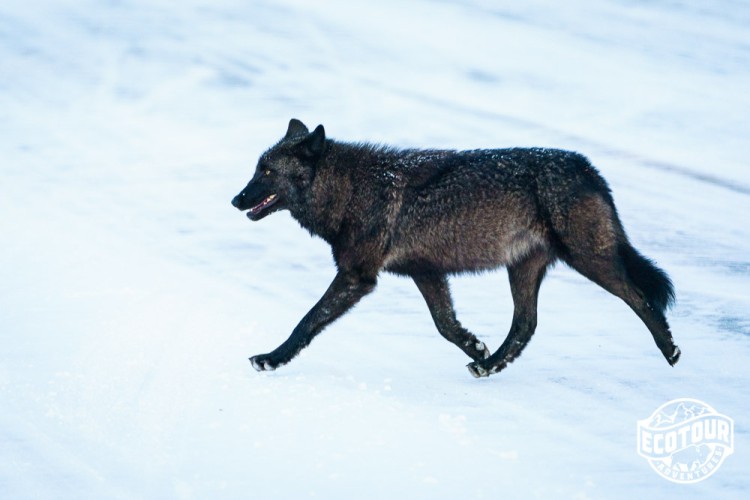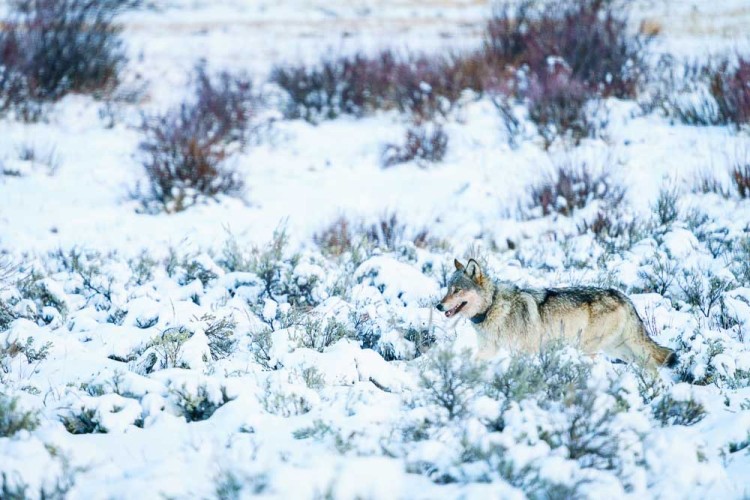Research Revealed: Coat Color & Disease Resistance in Wolves

The name gray wolf is a bit of a misnomer given that a wolf’s coat color can range anywhere from white to gray to black. Gray is the most dominant color (hence the species’ name), but black-coated wolves are becoming increasingly more common.
As of January 2023, Yellowstone National Park has at least 108 wolves, split among 10 packs. If you’ve ever had the opportunity to watch some of Yellowstone’s famous wolves for yourself, you have likely seen black wolves.

Photo by Josh Metten.
A black–or melanistic–wolf needs only one parent carrying the gene for a black coat in order to have a black coat. The allele for this gene first appeared in domestic dogs and made its way into the wolf genome thousands of generations ago. In scientific terms, this is known as the 3bp deletion.
In a recent interview with Buckrail News, Bridgett vonHoldt, associate professor at Princeton University who has researched Yellowstone wolf genes, said, “The wolves of YNP are all the same species, the same type, and share the same genetics. There is nothing genetically different about the two color morphs other than the presence of the 3bp deletion (in black wolves) and absence (in gray wolves).”
Black wolves do, however, have one advantage over gray-coated wolves. Specifically, black wolves that have inherited two copies of the black variant (one from each parent) have a resistance to canine distemper virus (CDV), likely a holdover from the gene’s long history among domestic dog populations.
CDV is a highly contagious and often deadly viral illness that affects dogs and other carnivores and has no known cure. Since wolf reintroduction in 1995, Yellowstone’s wolves have seen large declines in their population in 1999, 2005, and 2008, all due to CDV. However, these declines have dwindled in more recent years, despite the continued presence of CDV. The number of black wolves, on the other hand, has continued to rise.

Photo by Josh Metten.
Research published in October of 2022 has shed light on the relationship between CDV and coat color. Tim Coulson, professor of Zoology at Oxford University, and his team found that wolves with CDV antibodies (meaning they survived the virus) were more likely to be black than gray. Furthermore, melanistic wolves were more common in areas where CDV outbreaks previously occurred.
This has led to sexual selection for black wolves–in other words, in areas where CDV outbreaks are common, gray-coated adult wolves are choosing black-coated mates in order to ensure a competitive genetic advantage.
If you’ve witnessed Yellowstone’s wolves for yourself, did you have the chance to see any mated pairs? If so, what colors were their coats? We’re willing to bet one was black and one was gray!












